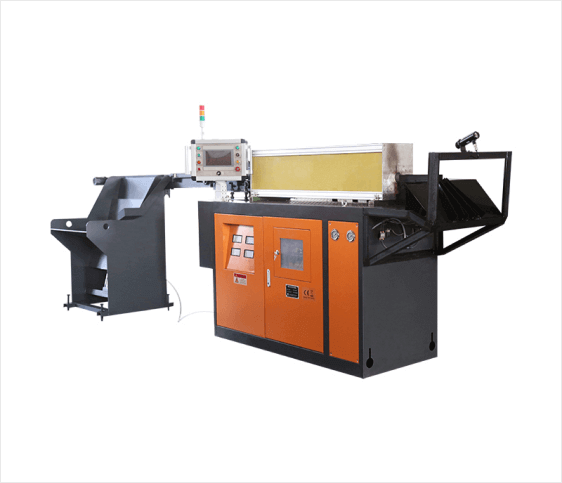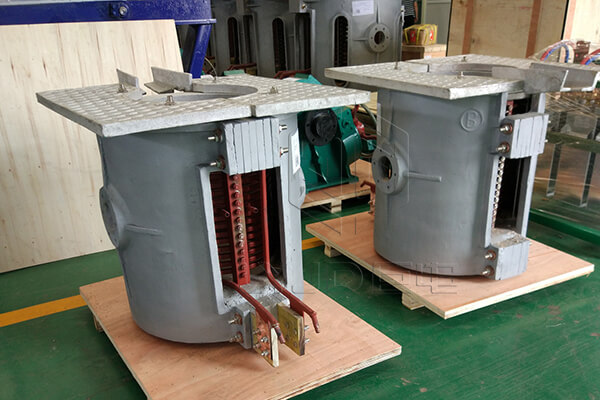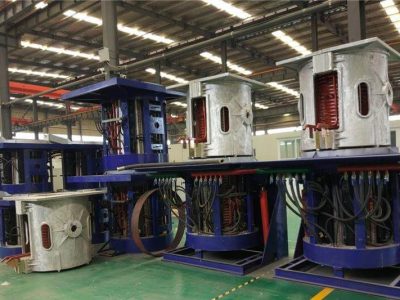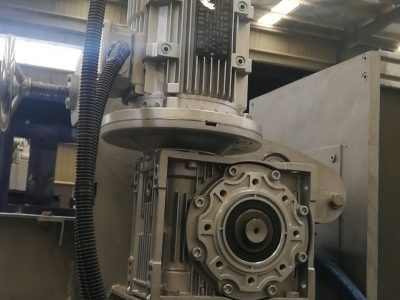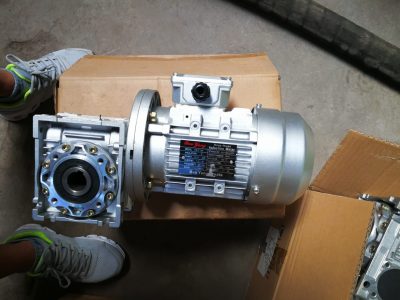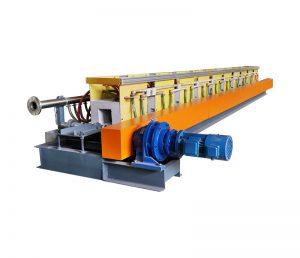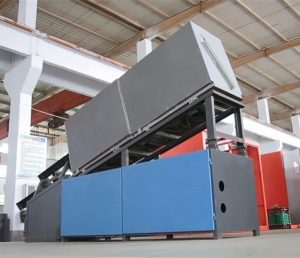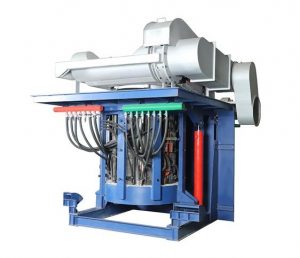An induction crucible furnace is a device that uses the principle of electromagnetic induction to heat metal. Induction crucible furnaces are mainly used for smelting and heating metal materials, such as copper, aluminum, steel, etc. Induction crucible furnaces are widely used in the manufacture of high-quality alloys, recycling of metal fragments, and re-melting and alloying processes.
How Does the Induction Crucible Furnace Work?
The induction crucible furnace uses the principle of electromagnetic induction to generate an alternating magnetic field through an energized coil. When the metal material is placed in the magnetic field, the metal material will induce eddy currents. These eddy currents produce magnetoresistance losses in the metal material and are converted into heat energy, thereby making the material heated. Specifically, when alternating current passes through an energized coil, an alternating magnetic field will be generated around it. When a metal material is placed in this magnetic field, eddy currents will be induced. The magnetoresistance loss generated by these eddy currents in the metal material will be converted into thermal energy, thereby heating the metal material.
Types of Induction Crucible Furnaces
We can classify the induction crucible furnaces differently according to the structure, frequency, use, etc. of the furnace body.
According to the structure of the furnace body
Induction crucible furnaces can be divided into two categories: crucible and trench. An induction crucible furnace is also called a coreless induction furnace. Its furnace body is shaped like a crucible with a circular cross-section. It is mainly used for smelting various metal materials, such as copper, aluminum, zinc, etc. The grooved induction crucible furnace is also called a cored induction furnace. Its furnace body is shaped like a crucible with a square cross-section. It is mainly used for melting high-melting-point metals and alloys, such as tungsten, molybdenum, vanadium, etc.
According to different frequencies
Crucible-type coreless induction furnaces can be divided into power frequency furnaces and medium frequency furnaces. The power frequency furnace is about 50Hz, and the frequency of the intermediate frequency furnace is between 1-10kHz. The heating speed of the medium frequency furnace is faster, but the price is relatively high.
According to different structures
Grooved core induction furnaces can be divided into vertical electric furnaces and horizontal electric furnaces. The furnace body of the vertical electric furnace is placed vertically and is suitable for melting small metal parts or melting and heat preservation of metal materials. The furnace body of the horizontal electric furnace is placed horizontally and is capable of melting large metal parts or performing continuous melting and pouring operations.
Depending on the application, induction furnaces serve three purposes: melting, holding, and pouring. In the field of casting, induction furnaces are mainly used for melting metal materials, such as copper, steel, aluminum, etc., as well as for heat preservation and pouring operations. In the metallurgical industry, induction electric furnaces are mainly used to smelt metals and alloys and manufacture various new materials and high-performance materials.
Advantages of Induction Crucible Furnace
An induction crucible furnace has the advantages of fast heating speed, energy saving, and environmental protection, precise temperature control, high melting efficiency, strong adaptability, and easy automation in metal smelting. It is an efficient, environmentally friendly, and energy-saving metal smelting equipment.
Fast heating speed
The induction heating method can heat the metal quickly, shorten the smelting time, and improve production efficiency.
Energy saving and environmental protection
Induction heating can achieve efficient use of energy, reduce energy waste, and reduce the impact on the environment.
Precise temperature control
The induction crucible furnace can accurately control the heating temperature and heating speed of metal by controlling the size and frequency of the current, which is beneficial to improving the performance and quality of metal materials.
High melting efficiency
The heating method of the induction crucible furnace can fully melt the metal material, reduce the generation of slag, and increase the metal yield.
Strong adaptability
The induction crucible furnace can be adapted to the smelting of different types and quantities of metal materials, from single metals to complex alloys, and can achieve efficient smelting.
Easy to automate
The induction crucible furnace can realize automated control of the smelting process through an automated control system, reducing manual operations and improving production efficiency and product quality.
Applications
Induction crucible furnaces are widely used in metal smelting. The following are some application cases.
Copper alloy smelting
An induction crucible furnace can smelt various copper alloys, such as brass, bronze, white copper, etc. By controlling the heating temperature and smelting time, high-quality copper alloys can be obtained.
Aluminum alloy smelting
An induction crucible furnace can smelt various aluminum alloys, such as aviation aluminum alloys, construction aluminum alloys, etc. By optimizing the heating process parameters, the strength, hardness, corrosion resistance, and other properties of aluminum alloys can be improved.
Stainless steel smelting
An induction crucible furnace can be used to smelt various stainless steels, such as 304 stainless steel, 316 stainless steel, etc. By controlling the heating temperature and melting time, high-quality stainless steel can be obtained.
Titanium alloy smelting
An induction crucible furnace can be used to smelt various titanium alloys, such as aviation titanium alloys, and medical titanium alloys, etc. It can provide sufficient heating power to achieve smooth melting of titanium alloy.
Metal recycling
An induction crucible furnace can be used to recycle various scrap metals, such as scrap aluminum, scrap copper, scrap steel, etc. Through induction heating, scrap metal can be quickly melted, purified, and reused.
Metal surface treatment
It can be used for metal surface treatment, such as aluminum alloy heat treatment, stainless steel heat treatment, etc. By controlling the heating temperature and heating speed, the hardness of the metal surface can be adjusted and improved.
At Last
The advantages of induction crucible furnaces such as high efficiency, environmental protection, and energy saving make it have broad application prospects in the field of metal smelting.
